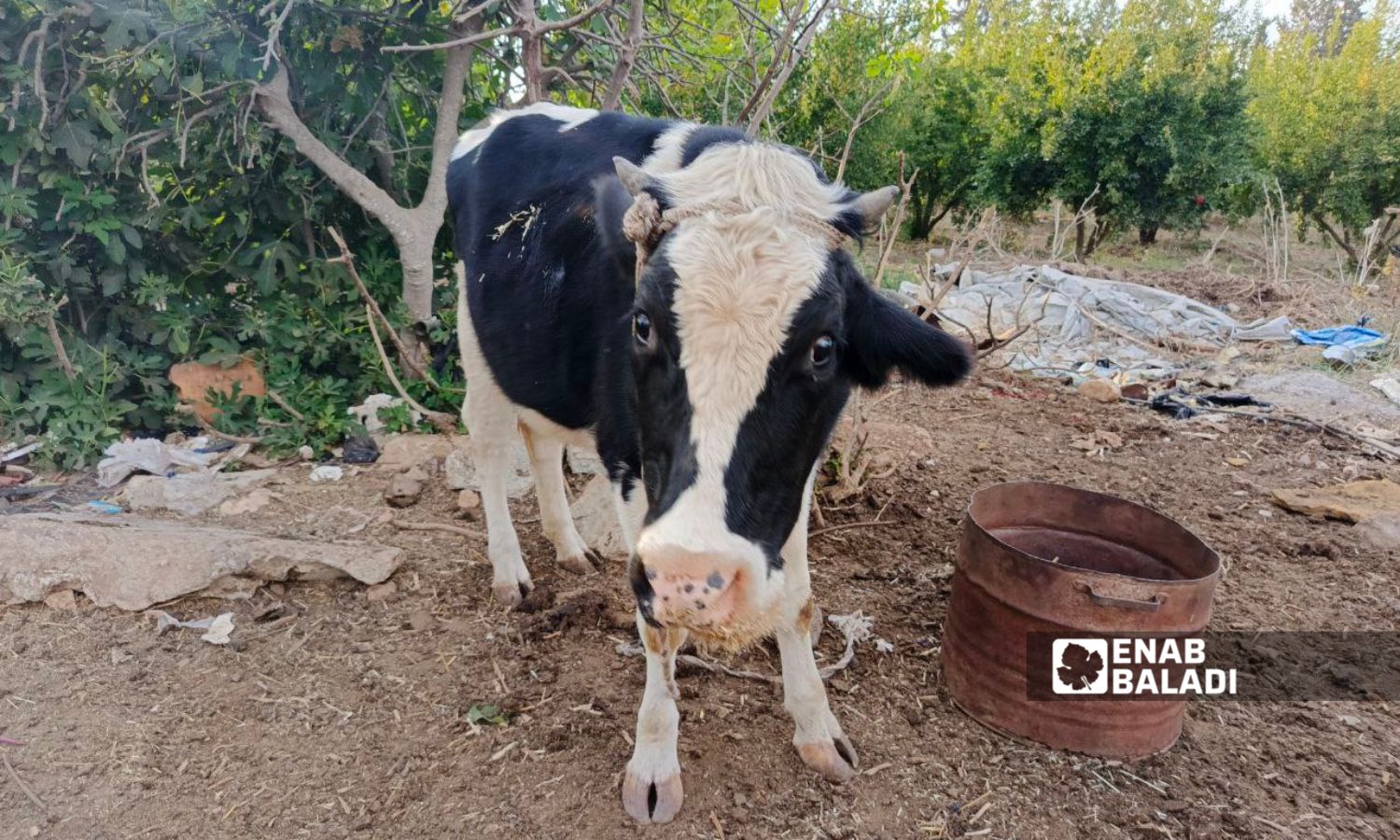



Daraa – Halim Muhammad
Several cattle breeders in the countryside of Daraa, southern Syria, have complained about the repeated failure of the artificial insemination process for their cows, attributing it to the corruption of the insemination straws, prompting some to resort to natural breeding using specially prepared bulls.
Artificial insemination is one of the methods used to improve livestock, and insemination straws are frozen semen stored in special cooling units at sub-zero temperatures, used by the veterinarian to inject the semen into the cow’s uterus.
Cattle breeder in western Daraa, Bassam Hassan (50 years old), stated that he has been suffering from the failure of artificial insemination since last year, as all attempts to inseminate two cows he currently owns have been unsuccessful.
He mentioned that he has relied on a veterinarian for the insemination of his cows for more than 20 years, and previous failures were only in rare cases due to medical obstacles that required treatment from a specialist.
The breeder added that his loss lies in the delay of new births, which constitute his primary profits from raising cows, especially as there are no returns from selling milk, particularly after the price of a kilogram of feed has risen to 5,800 Syrian pounds ($0.38), while milk has maintained its price at 5,000 Syrian pounds per kilogram.
Hassan sometimes has up to five cows, but he sells some when he needs money, while raising heifer calves until they become cows.
He renews his herd by selling the older cows and keeping the newly produced ones, which are more prolific in milk production and have stronger resistance to diseases.
This year, he was supposed to have four heads of cattle, were it not for the failure of the artificial insemination processes.
The cost of inseminating each cow is 45,000 Syrian pounds (three dollars), a process Hassan has repeated more than eight times for each cow over nearly a year, attributing the failure to corruption in the insemination straws.
Meanwhile, a veterinarian told Enab Baladi that it is possible for the straws to be corrupted, but there are other reasons for insemination failure, including the veterinarian’s lack of experience, inflammation in the cow’s uterus, or weakened ovaries due to malnutrition, which requires medical treatment and a balanced diet.
He added that the veterinarian should diagnose the cause and treat it before inseminating the cow.
As for breeder Ahmed (43 years old) from the town of Muzayrib in western Daraa, he has repeated the insemination of one of his cows three times consecutively over the past four months.
Ahmed said to Enab Baladi that he is considering selling his cow if her pregnancy continues to fail, adding that a non-pregnant cow sells at a low price compared to one proving to be pregnant, as its price increases as the due date approaches.
There are signs on the cow that indicate the need for insemination, including a decrease in milk production during the estrus or heat period, which is the period of insemination, as well as agitation and continuous lowing sounds, according to the breeder.
After failing to inseminate a cow owned by breeder Youssef (38 years old) twice in a row, he turned to natural breeding by sending the cow to a bull prepared for insemination, which is over two years old, as he owns three cows, two of which are young.
Youssef said that natural insemination succeeded on the first attempt, but the cost is financially burdensome for the breeder as he needs a farming vehicle to transport the cow to where the bull is located, with vehicle rental fees not less than 300,000 Syrian pounds ($20).
Additionally, the cost of natural insemination adds 100,000 Syrian pounds that the breeder pays to the bull owner as insemination fees.
For Hassan, he has ruled out the idea of natural insemination due to the high costs, which reach ten times that of artificial insemination attempts, adding that he is now considering raising a bull and preparing it for breeding.
Transportation fees in Daraa have increased following the rise in diesel prices in the local market to 20,000 Syrian pounds last October, whereas it was not more than 16,000 Syrian pounds per liter in September.
The veterinarian, for his part, noted that the delay in the cow’s pregnancy can lead to a decrease in milk productivity over time, and may even lead to its depletion.
The livestock sector in southern Syria gradually began to recover after 2018, but it has faced the rising costs of raising animals and the increase in production expenses, as well as the high price of meat leading to the slaughter of female livestock, including cows, which impacted the herd size.
The number of cattle in Daraa has reached 43,264 heads, while there are 779,139 heads of sheep and 119,054 heads of goats, according to statistics from the Animal Health Department in Daraa.
if you think the article contain wrong information or you have additional details Send Correction